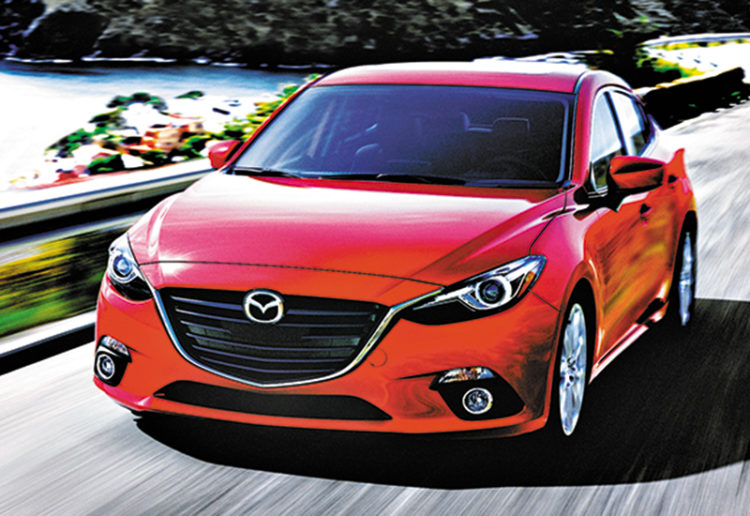 Among the Japanese carmakers, no brand is arguably as serious as Mazda when it comes to driving performance. With the company’s “zoom-zoom” marketing tagline and Jinba Ittai (“horse and rider are one”) philosophy in developing a car’s handling, it’s clear that Mazda is not fooling around.
Among the Japanese carmakers, no brand is arguably as serious as Mazda when it comes to driving performance. With the company’s “zoom-zoom” marketing tagline and Jinba Ittai (“horse and rider are one”) philosophy in developing a car’s handling, it’s clear that Mazda is not fooling around.
The marque’s intentions are even more obvious with the third-generation Mazda 3. Gone is the “smiley” design of the previous model; in its place is the brand’s “Kodo” styling language with curvier lines. The 3, in fact, now resembles its larger sibling, the mid-size Mazda 6.

The new Maza 3 boasts better build quality and feels less plasticky than before.
The new 3 is similar in length to the preceding model, but its wheelbase has been increased by 60mm and its body widened by 40mm, both done to improve passenger space. Beneath the vehicle’s sexier sheet metal is a new chassis that utilises 10 percent more high-tensile steel than the previous model.
The use of strong but lightweight materials is part of Mazda’s Skyactiv doctrine, which optimises the car’s body, chassis, engine and transmission. Indeed, the latest 3 has a kerb weight of 1265kg – 65kg lighter than its predecessor.
 Powering the 3 hatchback is a 2-litre Skyactiv powerplant with a sky-high (no pun intended) compression ratio of 13 to 1. Such a high compression ratio allows the engine to be more efficient, because increasing the combustion pressure increases the force of the pistons’ downward stroke. This means more power can be produced from the same amount of petrol injected into the cylinders.
Powering the 3 hatchback is a 2-litre Skyactiv powerplant with a sky-high (no pun intended) compression ratio of 13 to 1. Such a high compression ratio allows the engine to be more efficient, because increasing the combustion pressure increases the force of the pistons’ downward stroke. This means more power can be produced from the same amount of petrol injected into the cylinders.
In contrast to the non-Skyactiv 2-litre motor that produces 147bhp and 185Nm, this Skyactiv unit delivers 153bhp and 200Nm, with an average fuel consumption of 17.5km per litre – 2.6km per litre better than before.
But more importantly, the Skyactiv engine is more responsive than the older one. Paired to a 6-speed manual gearbox, the new motor is a keen performer that’s always eager to rev. Give the throttle a firm prod and the revs seem to jump, rather than climb, making the new 3 feel livelier than the old 3 (in a good way). But given the naturally aspirated power production, you’ll need more revs if you want stronger acceleration. A bigger downside is that despite Mazda having tuned the engine and exhaust, the car’s soundtrack is still quite tinny.












